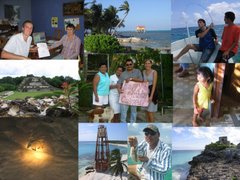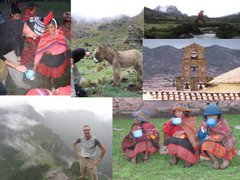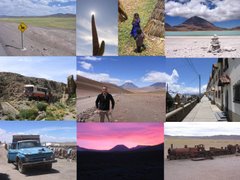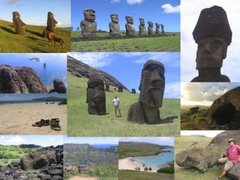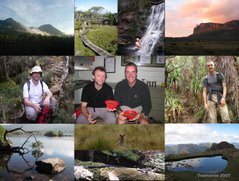
Aw man… worst pun ever. Apologies. It came to me when I went for a curry at Serendip restaurant in San Ignacio on Saturday night (oh, great curry by the way). For those not bilingual (me included) – Mas Alta is Spanish for higher, and Tikal is indeed the highest, largest, most impressive site in the Mayan World (mas o menos). Sven, I hope you appreciate how committed I am to improving our linguistics.
Talking of which, my new favourite programme on Mexican tv is “Que dice la gente”, or ‘What do the People Say?’ - the Mexican equivalent of Family Fortunes. Apart from the advert for “Mucho Busto”, there is nothing more entertaining on tv.
Talking of which, my new favourite programme on Mexican tv is “Que dice la gente”, or ‘What do the People Say?’ - the Mexican equivalent of Family Fortunes. Apart from the advert for “Mucho Busto”, there is nothing more entertaining on tv.
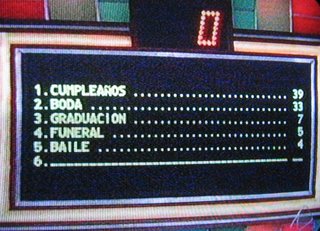 Si es esta en la table, voy a darle el dinero personalemente!
Si es esta en la table, voy a darle el dinero personalemente!Tikal was exactly what it said on the tin – truly huge temples (up to 200ft high) set deep in the jungle. And it was great to see a bit of Guatemala: much poorer than Belize, and obsessed with horses and football from what I could see. Enough chat, here’s some photos:
 Temples break through the tree canopy. Only the Ceiba tree (on the right) is tall enough to compete with the Mayan constructions.
Temples break through the tree canopy. Only the Ceiba tree (on the right) is tall enough to compete with the Mayan constructions.  From the top of the temples you can see for over 20 miles across the Guatemalan jungle.
From the top of the temples you can see for over 20 miles across the Guatemalan jungle.
Restoration is - not surprisingly - a long standing task at Tikal. The Mundo Perdido (Lost World) temple at Tikal took a thousand years to construct, from 700BC to 300AD.
 Smarmy tourist tarnishes ancient site…
Smarmy tourist tarnishes ancient site…  On the Friday night I went to see the Nutcracker - Belizian style - at the national concert hall. Great fun, with some amazing outfits and a mix of classical, reggae and Punta-Rock numbers! Top tip - chucking a hundred kids into the cast guarantees a big audience of friends and family…
On the Friday night I went to see the Nutcracker - Belizian style - at the national concert hall. Great fun, with some amazing outfits and a mix of classical, reggae and Punta-Rock numbers! Top tip - chucking a hundred kids into the cast guarantees a big audience of friends and family… 










